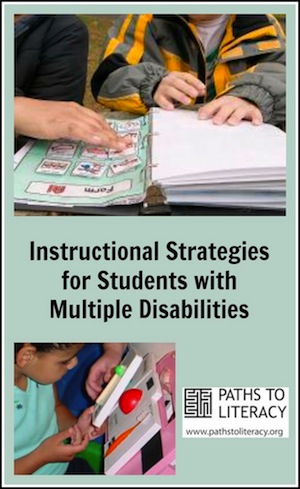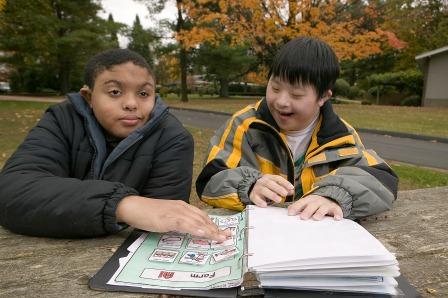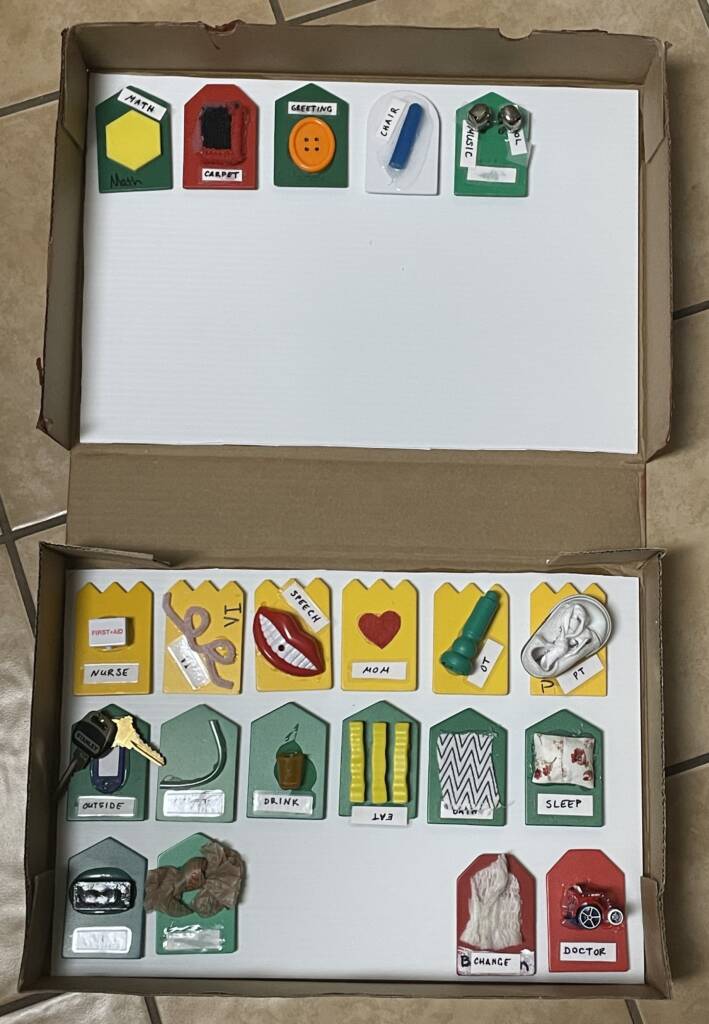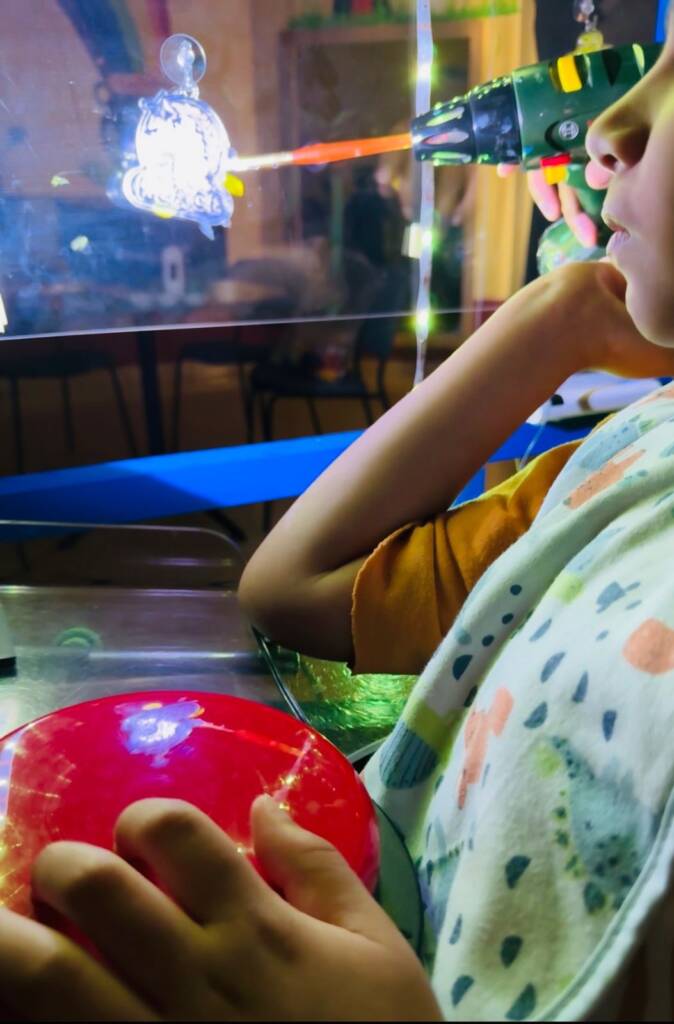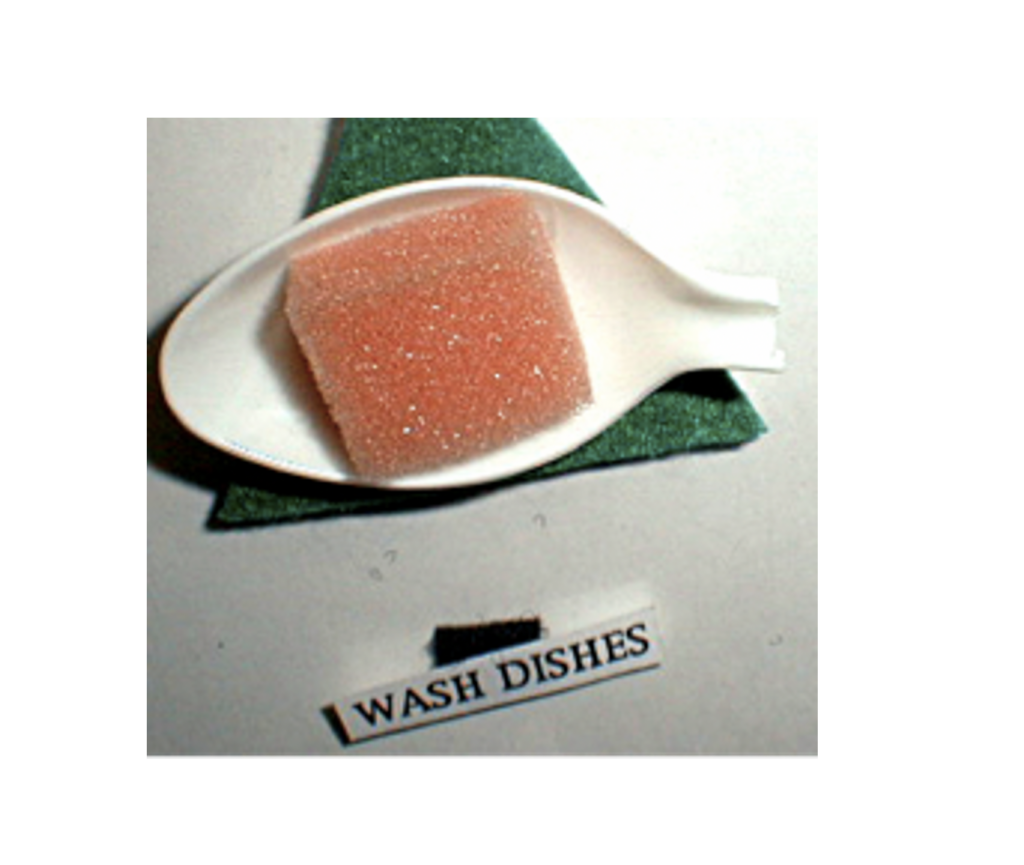No two students with multiple disabilities have the exact same profile, as the combination of disabilities, age of onset, level of educational intervention, and environmental factors will all have some affect. The strategies that we offer are therefore general, and should be modified according to individual needs and circumstances.
Strategies to promote literacy development in students with multiple disabilities:
- Promote development of cognitive skills through active participation with hands-on materials (e.g. exploring big/little, wet/dry, heavy/light).
- Focus on establishing a recognized means of communication that is consistently reinforced and built upon by the family and all members of the team. For example, if a child is using objects to communicate choices (i.e. selecting one from a choice of two items at snack time, such as an apple and a cracker), then these objects should be incorporated into literacy activities.
- Vocabulary should be familiar to the child and should be presented in a way that is clear and consistent. To the extent possible, using the same terms across settings (including home and school) will support learning. Are they shoes or sneakers? Belly or tummy? These may seem like small differences, but to someone who is just developing formal language skills, consistency may be helpful.
- Provide exposure to a wide variety of literacy materials, using real objects and adaptations to make them as accessible as possible to an individual student. Be sure that books and other literacy materials are available at home and in the classroom. This may include storyboxes, experience books (written by the student as well as by others in the class), and books with braille, tactile symbols, and real objects.
- Avoid miniature representations, as these are often not meaningful to children with visual impairments and additional disabilities. For example, a section of a seat belt may be a better representation of a car than a small, matchbox car. Similarly, with a weather chart, cotton balls for clouds or snow and glue drops for rain are not as meaningful as a wool hat or an umbrella.
- Create routines that sequence events with a clear beginning, middle, and ending. These can be routines of daily living, such as brushing teeth, or they can be activities, such as making a snack. Learning to follow a sequence of events helps to establish an understanding of what will come next. Tactile books about basic routines are a good way to make early literacy experiences meaningful. See also Developing Routines.
We all benefit from exposure to a variety of teaching and learning techniques when developing a set of skills. For students with multiple disabilities, it is important to provide a range of experiences and strategies, while also trying to be consistent in the structure, materials, and vocabulary.
Additional Resources
Building Learning Skills for Children with Multiple Disabilities, Family Connect
Fact Sheets, California Deafblind Services
Literacy for Students with Significant Cognitive Disabilities, LiveBinder from Center for Literacy and Disability Studies and Claire Greer
Strategies for Assessing and Teaching Students with Visual and Multiple Disabilities, recorded with webinar with Millie Smith, Perkins eLearning
Tips for Home and School, Nevada Dual Sensory Impairment Project
